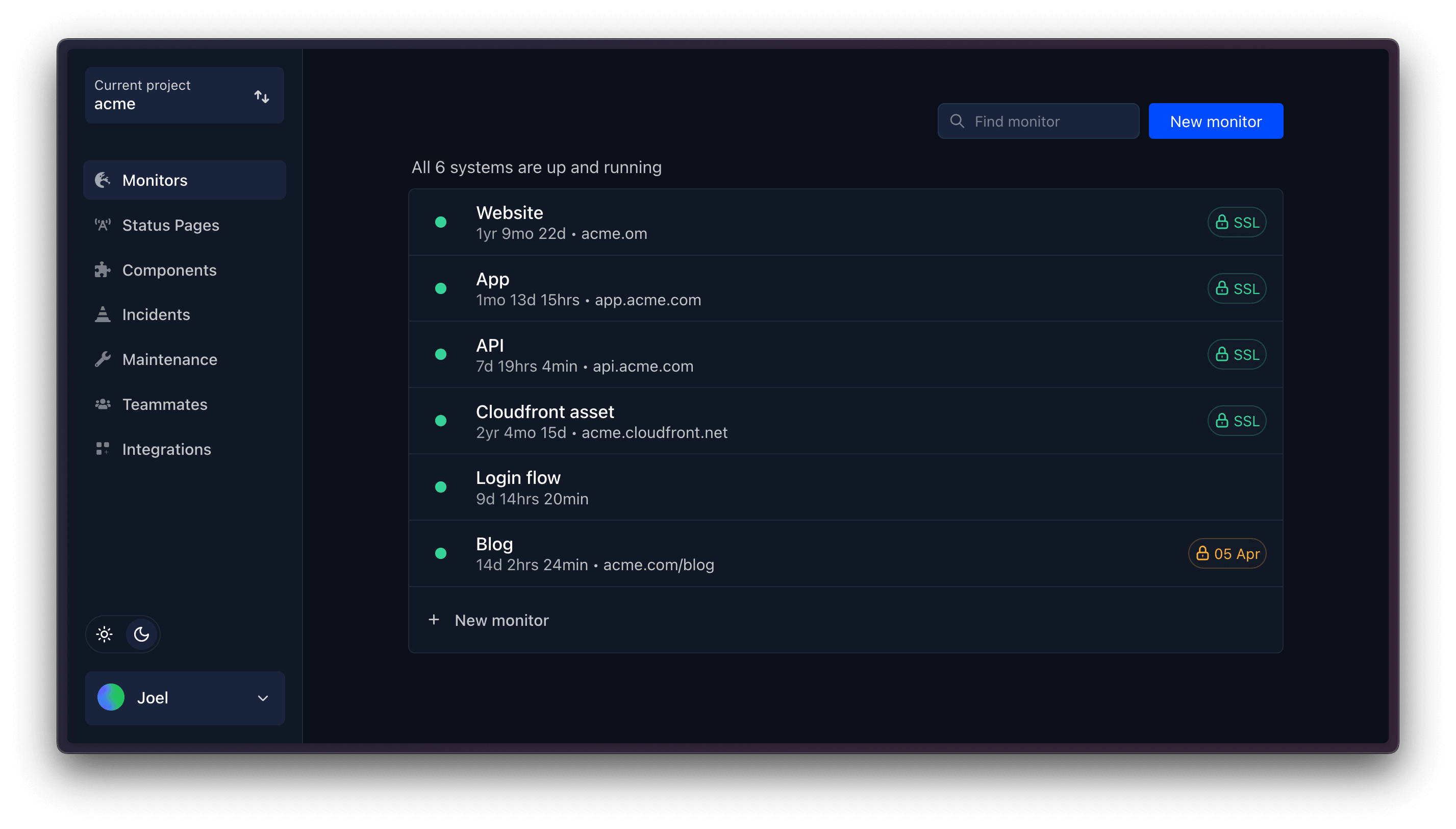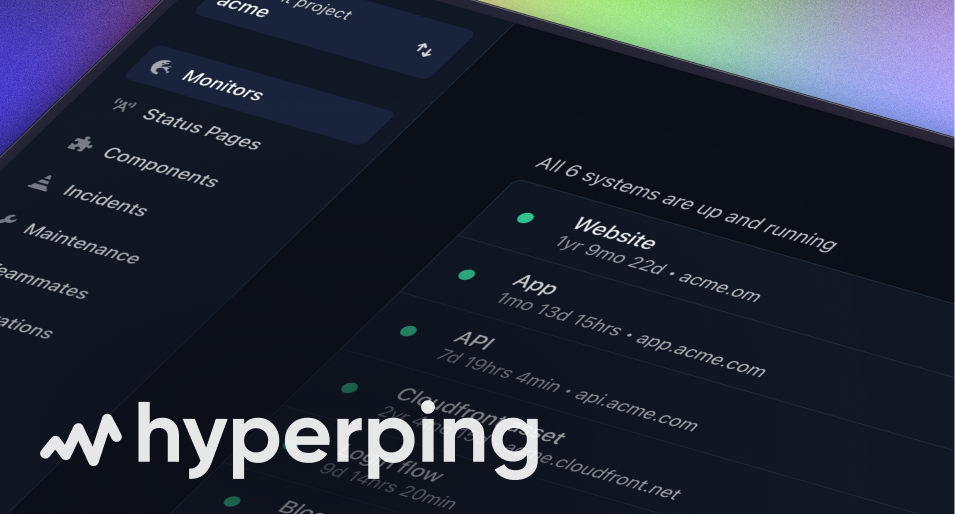What is Hyperping?
Hyperping is a monitoring platform and status page service. We periodically check your websites and APIs against our servers, and send you instant notifications when we detect an outage.

You can display the statuses of your services in a dedicated “status page” where your users can go to find information about any incident or maintenance you are having in real time. You can inform them by posting updates on it and notify them via their preferred channels, such as email or Slack.
One benefit of using Hyperping is that is seamlessly combines 2 products into one, that are usually separate in the industry.
Why is monitoring important?
Monitoring is essential to any business. It helps you be proactive when handling downtimes with your services. It is more reassuring for your customers that you are already handling a problem rather than them letting you know about one.
One common mistake is to only start monitoring during an incident, when everything is on fire. It is better practice, and for peace of mind, to be ready when it eventually happens.
How does Hyperping work?
Our systems use a cron-based scheduler. By default, we ping your monitor on a 30-second basis.
Here are the steps for every check:
- Every 30 seconds, it queues up your monitor
- A server on the region you selected pings your monitor and returns the results
- If no downtime is detected, we log this check and wait until the next one
- If a downtime is detected, we double check across other regions you selected
- If confirmed, we start an outage for this monitor, and alert you via your selected channels
- When the monitor is back online, we notify the same channels
What about false positives?
When detecting an outage, our systems will automatically perform a check against all the other regions you selected to confirm it.
Is it common that a single checks do not perform as intended. Checks are performed across internet, and failures can happen across a variety of parameters, such as a quick loss of internet connection from one party, a spike of RAM or CPU.
Our double checks help avoid considering those isolated errors as downtimes.
Additionally, we host our servers on a variety of hosting providers, such as AWS, Scaleway or DigitalOcean to add redundancy, and avoid single point of failure.
What to monitor?
It is best to monitor every single service your infrastructure relies on. The most common ones are:
- Your main website - https://acme.com
- Your dashboard - https://app.acme.com
- our API - https://api.acme.com
Those 3 services are usually hosted differently and thus all deserve their own monitor.
Here are other common type of monitors:
- Assets - such a static javascript file, or a static image
- A third party service - such as a payment platform or an external API your business depends on
- A micro-service
During an incident
When an incident is detected, we send notifications to all the members of the project to their emails. You can receive alerts in other notifications channels, such as Slack, SMS, Telegram, OpsGenie, PagerDuty or webhooks.
If you’re ready to get started, you can click here to see how to create your first monitor!
